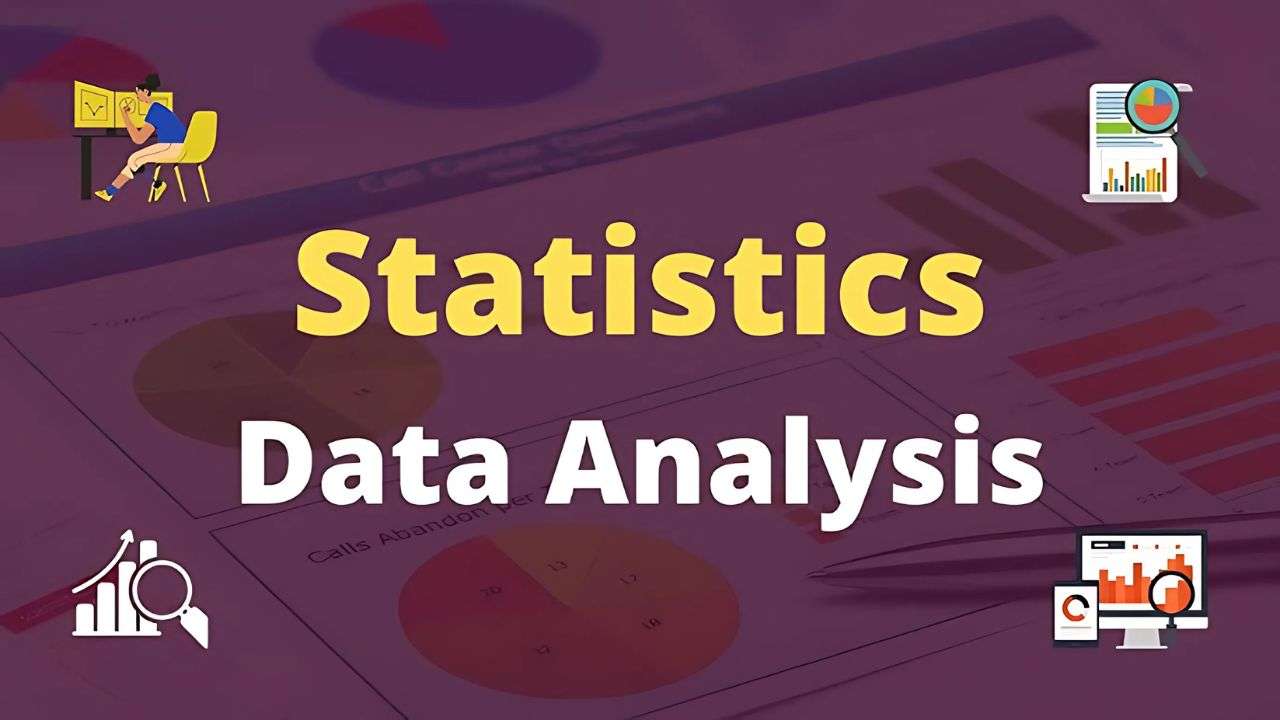Statistics is an essential skill for anyone who wants to make sense of data. From uncovering patterns in customer behavior to predicting future trends, statistics empowers analysts to extract meaningful insights from raw numbers. In this guide, you’ll explore the fundamentals of statistics, learn its role in data analysis, and discover practical ways to use it in real-world scenarios.
What is Statistics in Data Analysis?
Definition of Statistics and Its Role in Data Analysis
Statistics is the science of collecting, organizing, analyzing, and interpreting data. It provides the tools to make data-driven decisions, allowing you to convert raw data into actionable insights. For instance, a marketing team might use statistics to determine customer preferences by analyzing survey results.
Difference Between Descriptive and Inferential Statistics
- Descriptive Statistics focuses on summarizing data through metrics like mean, median, and standard deviation. Example: Reporting the average monthly sales of a company.
- Inferential Statistics involves drawing conclusions about a larger population based on a sample. Example: Predicting election outcomes by surveying 1,000 voters out of millions.
Real-World Examples of Statistics in Action
- Healthcare: Statistics are used to measure the efficacy of new treatments.
- Finance: Banks use statistical models to calculate credit risks.
- Retail: Businesses analyze sales data to optimize inventory management.
Key Statistical Concepts for Data Analysis
Descriptive Statistics
- Mean (Average): The sum of all values divided by the number of values.
Example: Calculating the average age of customers in a store. - Median: The middle value when data is arranged in order.
Example: Identifying the median income in a neighborhood to understand socio-economic trends. - Mode: The most frequently occurring value.
Example: Finding the most popular product sold in an e-commerce store. - Standard Deviation: Measures how spread out the data is from the mean.
Example: Understanding variability in daily website traffic.
Inferential Statistics
- Sampling: Selecting a subset of data from a larger population.
Example: Conducting a survey on 500 students to infer the study habits of all students in a university. - Hypothesis Testing: A method to test assumptions.
Example: Testing whether a new marketing campaign leads to higher sales. - Confidence Intervals: A range of values likely to include the population parameter.
Example: Reporting that a candidate’s approval rating is 55% ± 3%.
Probability Theory
- Basics of probability: Probability helps you measure the likelihood of an event.
Example: Calculating the probability of drawing an ace from a deck of cards. - Distributions: Patterns data tends to follow (e.g., normal distribution).
Example: Understanding bell-shaped curves in height distributions.
Importance of Statistical Software for Analysis
Popular Tools: Python, R, Excel, and SPSS
- Python: Offers libraries like Pandas and NumPy for statistical analysis.
Example: Automating the calculation of regression models. - R: A favorite among statisticians for its vast array of packages.
Example: Visualizing data trends using ggplot2. - Excel: Best for quick calculations and basic visualizations.
Example: Creating pivot tables for sales data analysis. - SPSS: Ideal for complex statistical modeling.
Example: Conducting ANOVA tests in academic research.
Key Features and Capabilities of Each Tool
- Python: Open-source, scalable, ideal for big data.
- R: Focused on statistical rigor and visualization.
- Excel: User-friendly for beginners.
- SPSS: Simplifies advanced analyses.
How to Choose the Right Tool for Your Needs
- For large datasets, use Python or R.
- For simple tasks, stick with Excel.
- For in-depth research, consider SPSS.
Step-by-Step Process to Learn Statistics for Data Analysis
Step 1: Understand Basic Terminology and Principles
- Start with definitions: mean, median, mode, variance, etc.
- Learn the difference between population and sample.
- Familiarize yourself with data types: categorical and numerical.
Step 2: Study Descriptive Statistics and Visualization Techniques
- Create histograms, bar charts, and pie charts.
Example: Visualize customer age distribution using a histogram. - Explore scatter plots to identify correlations.
Example: Examine the relationship between ad spend and sales revenue.
Step 3: Explore Probability and Statistical Distributions
- Study probability rules: addition and multiplication.
- Understand common distributions like binomial and normal.
Example: Use the normal distribution to analyze student test scores.
Step 4: Practice Inferential Statistics Through Real-World Datasets
- Work with sample data to make inferences.
Example: Predicting election results from exit polls. - Learn hypothesis testing using t-tests and chi-square tests.
Step 5: Use Statistical Software for Hands-On Experience
- Start with Excel for basic calculations.
- Transition to Python for complex analyses.
- Use R for detailed visualizations and models.
Practical Applications of Statistics in Data Analysis
Analyzing Customer Behavior in Marketing
- Identify customer segments based on purchasing patterns.
- Measure the effectiveness of promotional campaigns.
Financial Data Forecasting and Trend Analysis
- Use time series analysis to predict stock prices.
- Apply regression models to assess investment risks.
Healthcare Data Insights and Predictions
- Analyze patient data to identify health trends.
- Predict disease outbreaks using statistical models.
Quality Control in Manufacturing Processes
- Implement statistical process control (SPC) charts.
- Measure product defect rates to improve quality.
Tips to Master Statistics Effectively
Use Online Courses and Tutorials for Structured Learning
- Platforms like Coursera, Udemy, and Khan Academy offer excellent resources.
Example: Enroll in “Statistics for Data Science” courses.
Practice with Real-World Datasets and Projects
- Use datasets from Kaggle or Google Dataset Search.
Example: Analyze COVID-19 case data for insights.
Join Data Analysis Forums and Communities for Collaboration
- Participate in discussions on Reddit and Stack Overflow.
- Share your projects and get feedback.
Regularly Review and Test Your Knowledge Through Quizzes
- Use platforms like DataCamp for interactive exercises.
- Solve problems from books like “Think Stats” by Allen B. Downey.
Conclusion
Mastering statistics is an exciting and rewarding journey. By understanding concepts like mean, variance, and hypothesis testing, and applying them with tools like Python and R, you can transform data into actionable insights. Remember, practice makes perfect. Start today by exploring real-world datasets and experimenting with statistical methods. The world of data analysis awaits—are you ready to make your mark?
